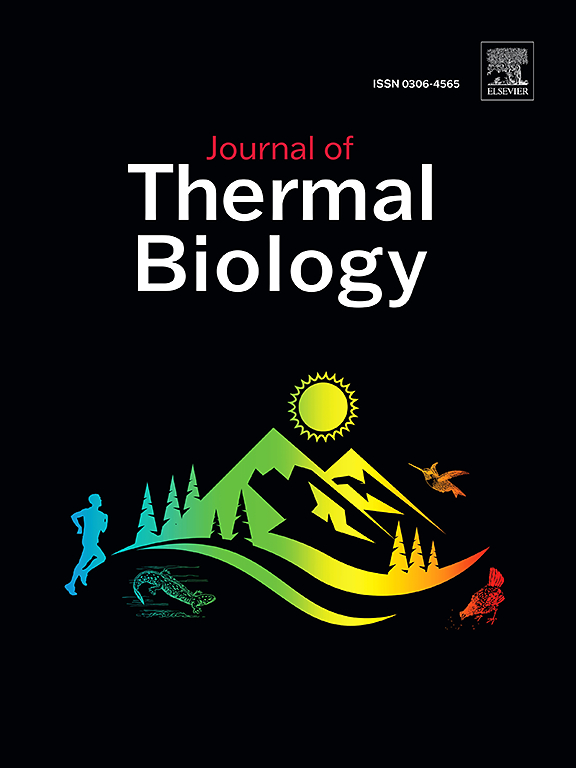A reinforcement learning approach for real-time adjustment of thermal imaging parameters in thermoplasmonic applications
IF 2.9
2区 生物学
Q2 BIOLOGY
引用次数: 0
Abstract
The application of thermoplasmonics faces challenges related to precise temperature control distribution for managing heat in heterogeneous materials. A hybrid Silicon Carbide (SiC) and Aluminium (Al) paste was developed for effective temperature control in thermoplasmonic heating-based applications. The thermal images of this hybrid paste of SiC-Al is examined for multimodal parameters to estimate the plasmonic heat.
Reinforcement learning (RL) is implemented over the SiC-Al composite's thermal images using the estimated parameters for effective heat distribution, employing optimized laser power density, irradiation time, and heating period for thermoplasmonic applications. Optimizing the RL technique reduced the temperature in the central region from 75 to 70 °C, and increased it in the peripheral area from 45 to 55 °C.
Laser intensity was changed from 100 mW to 75 mW at the center to avoid overheating the tissue, the exposure time was altered from 30s to 45s, and the positioning was 5 cm away (rather than 2 cm) from the center to allow better heat conductivity.
The structural changes thereof were verified through Raman spectroscopy by altering the vibrational modes of the samples. The heating methodology employed enabled a decreased thermal gradient of up to about 10 °C. Thus, the hybrid paste SiC-Al exhibits significant thermoplasmonic material applications.
热等离子体应用中热成像参数实时调整的强化学习方法
热等离子体的应用面临着与精确的温度控制分布有关的挑战,以管理非均质材料中的热量。为有效控制热等离子体加热应用中的温度,研制了一种碳化硅(SiC)和铝(Al)混合浆料。利用多模态参数对硅铝杂化浆料的热图像进行了分析,以估计等离子体热。强化学习(RL)在SiC-Al复合材料的热图像上实现,使用估计的有效热分布参数,采用优化的激光功率密度、照射时间和热等离子体应用的加热周期。优化RL技术可将中心区域温度从75℃降低到70℃,将外围区域温度从45℃提高到55℃。为了避免组织过热,激光强度从100 mW改变到75 mW,曝光时间从30s改变到45s,定位距离中心5cm(而不是2cm),以获得更好的导热性。通过改变样品的振动模式,通过拉曼光谱验证了其结构变化。所采用的加热方法使热梯度降低了约10°C。因此,混合浆料SiC-Al表现出显著的热等离子体材料应用。
本文章由计算机程序翻译,如有差异,请以英文原文为准。
求助全文
约1分钟内获得全文
求助全文
来源期刊

Journal of thermal biology
生物-动物学
CiteScore
5.30
自引率
7.40%
发文量
196
审稿时长
14.5 weeks
期刊介绍:
The Journal of Thermal Biology publishes articles that advance our knowledge on the ways and mechanisms through which temperature affects man and animals. This includes studies of their responses to these effects and on the ecological consequences. Directly relevant to this theme are:
• The mechanisms of thermal limitation, heat and cold injury, and the resistance of organisms to extremes of temperature
• The mechanisms involved in acclimation, acclimatization and evolutionary adaptation to temperature
• Mechanisms underlying the patterns of hibernation, torpor, dormancy, aestivation and diapause
• Effects of temperature on reproduction and development, growth, ageing and life-span
• Studies on modelling heat transfer between organisms and their environment
• The contributions of temperature to effects of climate change on animal species and man
• Studies of conservation biology and physiology related to temperature
• Behavioural and physiological regulation of body temperature including its pathophysiology and fever
• Medical applications of hypo- and hyperthermia
Article types:
• Original articles
• Review articles
 求助内容:
求助内容: 应助结果提醒方式:
应助结果提醒方式:


